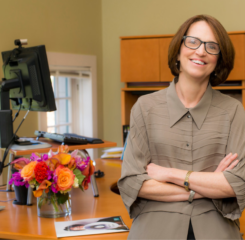The Health Care Payment Learning Action Network (HCP-LAN) convened its annual daylong summit on October 30, joined by providers, payers and government staff to discuss how the health care system is progressing toward adoption of accountable care. Some reflected on the recent report that annual Medicare spending per beneficiary is $10,000 less than projected ($3.9 trillion total below projections), as noted in a recent New York Times article. Over the past decade, average spend per Medicare beneficiary has remained relatively even and some at the Summit claimed it is evidence that moves away from Medicare FFS toward value-based care are achieving the desired goals.
For those holding onto the vestiges of Medicare FFS, Jon Blum, Principal Deputy Administrator & Chief Operating Officer at CMS, rejected the idea that there would be a return to FFS and appeared to indicate that CMS was relinquishing control to managed care when he noted that the audience should be aware that “CMS will have less impact overtime” as most care shifts to managed care. This is disheartening news as LeadingAge continues to push for reforms within the Medicare Advantage program to ensure beneficiary access and provider viability.
The HCP-LAN also annually examines what portion of health care spending is in alternative payment models, especially those models where providers are accepting upside and downside financial risk. The 2023 APM Measurement Report, which examines 2022 data, shows a considerable jump in accountable care adoption across payers. The percentage of health care payments that are flowing through Alternative Payment Models (APMs) that include downside risk or population health payments has increased 5% (double prior years) overall across all payer sources in the past year with traditional Medicare showing the greatest year-over-year gain (6.2%). Medicare Advantage still has the greatest percentage of its spending in these models at 38.9%.
Throughout the Summit, speakers highlighted that barriers to further adoption of value-based care persist. One fundamental barrier, according to Blum, is that we still lack a common language and framework for what is meant by “value-based care.” Providers currently define this term differently.
Other persistent barriers include the need to: improve data sharing across providers, as well as align payment models and quality measures across payers so providers don’t have “8-point font” spreadsheets detailing all the quality measures they must track. Regrettably, these themes were a repeat from prior Summits.
Participants pledged to make progress on these issues prior to next year’s Summit given the momentum shift toward more accountable care. A few plans observed that while providers are increasingly reaching out to them seeking value-based payment arrangements, ultimately, the plan and provider payment tracking systems make adoption difficult, as most are designed for a FFS payment.
The head of Medicare, Dr. Meena Seshamani explained that CMS and CMMI efforts are moving toward a broader view of what health care means “caring for people versus treating a diagnosis or disease,” citing new payment codes that would pay for conducting social determinant of health risk assessments and for caregiver training.
Finally, accountable care was credited with providers experiencing less burnout because they have more flexibility to focus on what matters. LeadingAge has shared with CMS that they cannot forget to include aging services providers in a meaningful way in value-based and accountable care so there are opportunities for these providers to benefit from the flexibilities and the financial opportunities that they present.

 Shutdown Week Three: Impact of Ongoing Closure on Affordable Housing
Shutdown Week Three: Impact of Ongoing Closure on Affordable Housing


